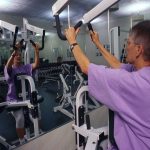
After SARS-CoV-2 exposure, a 14-day quarantine is standard among university athletes. But shorter quarantines for these athletes, along with mid-quarantine testing, may improve their compliance without increasing the risk that they’ll infect others, a new study suggests. Researchers analyzed data from 620 U.S. college athletes who tested positive for SARS-CoV-2 while in quarantine after exposure to the virus. Nearly half (49%) tested positive by the second day of quarantine, and 73% did by day 5. The rate of positive tests declined over the quarantine period. Among athletes who were still negative at day 5 of quarantine, the estimated probability of having a positive test result was 26.9% after day 5; 14.2% after day 7; and 4.7% after day 10. According to the authors, the probability of receiving positive test results after day 10 of quarantine is low. Of 29 athletes who tested positive between days 11 and 14, 89.7% had not been tested previously during their quarantine, according to the findings. More athletes reported exposure to COVID-19 at social gatherings (40.7%) and from roommates (31.7%) than from athletic activities (12.7%), the study found. It was published Jan. 8 in the U.S. Centers for Disease Control and Prevention’s Morbidity and Mortality Weekly Report. The findings support shortened quarantine options for college athletes, given the low proportion who tested positive after 10 days, according to study author… read on > read on >






















-300x200.jpg)







-300x169.jpg)
